A well-crafted research paper outline can make the process of wiring a journal paper smooth and efficient. The problem is that it is difficult to compose a realistic paper outline before starting to actually write the paper itself. Sure, the main headings in a typical scientific paper are largely the same, but to experience any real productivity benefits from a paper outline, you will need more than just top-level headings.
In this article, I will show you how to efficiently kick-start the research paper writing process in two steps:
- Use a key sentence skeleton to describe the main message of your research paper.
- Create a thorough research paper outline using the key sentences that you just developed.
Together the research paper outline and the key sentence skeleton will serve as a blueprint for the process of writing the full research paper. Following this writing process should make writing more efficient and the finished paper – clearer.
Whenever I start to work on a new research paper, I open my writing template that includes the research paper outline and the key sentence skeleton. The template will also help with automated formatting.
What exactly is a Research Paper Outline?

Picture yourself planning a cross-country road trip with your friends. What’s the first thing you do? You look at a map, right? Well, a research paper outline is your trusty map for writing a full research paper. A well written research paper outline will keep you on track and help you avoid getting lost.
The benefits of creating a research paper outline:
- The research paper outline will ensure that you know what to write in which section thus making the research paper writing process more efficient.
- A thorough paper outline will shave off some of those those tedious re-writes because your initial plan will enable you to write clearer right from the first draft.
- Agreeing on the paper outline among the co-authors (and supervisor) before starting to write will allow you to avoid any unnecessary quarrels and re-writes later on.
What exactly is a Key Sentence Skeleton?
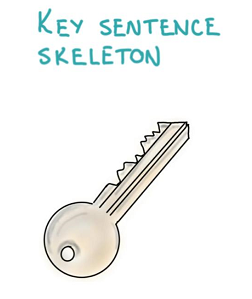
A good research paper should clearly communicate one central message. The paper’s key sentences help in defining this message. You will know that the sentences are complete if you are able to bind them together and use them as a short summary of your paper.
For each section of the research paper, I will provide you with a key sentence skeleton that holds filler words and square brackets which you can replace with your own text. Written well, the key sentences will hold the most essential information about your research.
The key sentences are a great way to kick off the writing process since you will no longer be staring at a blank screen. After finalizing the sentences, your next task will be to add more detail and evidence to substantiate them.
The key sentences help with another thing: they will force you to think about the message your want to convey with your research paper. This will allow you to further refine the research paper outline by including subheadings.
Research paper structure
Title
The title of your research paper is the first thing readers encounter. They will use the title to decide whether they want to invest the time in reading your paper. Think of the title as the ultimate summary of your research paper. Spend enough time to come up with a clear, intriguing title that convinces that your research paper is worth reading.
To come up with a good title for your article, first create a list of keywords and short phrases that:
▪ Describe the problem you will address,
▪ Summarize the main idea of your research,
▪ Demonstrate the impact that your paper has.
Now, try mixing up different combinations of these words to come up with a title of no more than 10 words. Try to prepare a list of at least five potential titles ranging from descriptive to snappy and exciting. Then you can ask your peers to help you choose the winner.
Key questions to consider for the Title of a research paper:
- Does my title clearly and concisely reflects the focus of my research (bonus points for communicating the result of your research)?
- Is my title too generic? Can I be more specific and descriptive?
- What keywords in the title would help readers and search engines to find my paper easily?
Abstract
The abstract is like the executive summary of your research paper – a concise overview that gives readers a taste of what’s to come. It helps people who are shopping for research papers decide whether your study aligns with their interests and warrants spending their time to read the entire paper.
To make sure the abstract accurately reflects the paper content, write it after completing your research paper.
Key questions to consider for an Abstract of a research paper:
- How can I concisely summarize the main objectives, methods, results, and conclusions of my study?
- What is the word limit for the abstract? (Typically it varies between around 150 and 500 words.)
- Is my language clear and straightforward and have I avoided jargon and abbreviations as much as possible?
- Is the main focus of the abstract on the significance and potential implications of my findings?
Key sentences for Abstract
[Briefly introduce the field in a language accessible to scientists from any field]. However, [state the problem/research gap/what is unknown]. Here we [investigated/explored/analyzed] [research topic] through [brief main research methods]. Our findings [reveal/demonstrate/show] that [key findings or discoveries, defined quantitatively when possible]. These results [can advance/be used for/provide insights into] [the problem you identified earlier].
Introduction
The introduction is one of the most challenging sections of the research paper to write. It should leave no doubt in the mind of the reader that what you are doing is important and that this work could push scientific knowledge forward. To demonstrate this convincingly, you will need to have a good understanding of the state-of-the-art in your field. Try to zoom out to see the bigger picture in order to demonstrate the potential impacts of your work.
Start the introduction with a brief context, followed by the motivation for the study. Next, explain the research gap you are going to bridge and what approach you will take to do it. You can also present the structure of the research paper.
Key questions to consider for the Introduction of a research paper:
- What background information is necessary to provide context for my study?
- Why is the topic significant and what is its potential impact?
- What is the main research problem or question that I address in my paper?
- How did I address this problem with my research?
Key sentences for Introduction
- In the [your field/area/topic], [provide context to the main concepts in the field for people unfamiliar with the topic]. Understanding [your subject matter] can lead to [mention potential applications/impact of the findings], thus benefiting [specific stakeholders/fields/groups]. However, despite [previous studies or knowledge in the field], there remains [mention specific limitation/challenge/research gap in the existing understanding]. To address this gap, we [studied/investigated/calculated/assessed/modeled/developed] [your specific research topic].
Objective
The objective statement defines the specific goals of your study, allowing the readers to understand what they can expect from your paper. Make it short and sweet: no long sentences or winding explanations. Just clearly state the main objective of the study, followed by sub-objectives if any.
Key questions to consider for Objective statement of a research paper:
- Can I list my research objective(s) as a concise statement (preferably one sentence)?
- Does the objective accurately present the question that is answered in the paper? (Do this after you have finished the paper.)
- Can I narrow down to one or two main objectives? (Many objectives might make your paper less focused and memorable.)
Key sentences for Objective
The main objective of this research is to [determine/assess/design/evaluate/explore/examine/model/apply/calculate] [describe the specific aim or purpose of the research].
Methods
In the methods section, describe your research design and methodology in enough details that would allow the readers to reproduce the study. This means that if you are using a novel method, you will have to describe it thoroughly. If, on the other hand, you applied a standardized method, or used an approach from another paper, it will be enough to briefly describe it and add a reference to the detailed original source.
Key questions to consider for Methods section of a research paper:
- Why did I select this research design to reach my study’s objectives over other possible approaches?
- Which data collection methods and instruments did I use for my research?
- What details are necessary to reproduce my results?
- What statistical or analytical techniques will I use to analyze my data?
- How did I address ethical considerations in my research (if any)?
- Can I create a methodology flowchart or a table that summarizes the steps taken?
Key sentences for Methods
To achieve the objective, we selected the [research design/method/approach/compound] because it [justify your motivation for choosing this over other approaches]. The selected approach included [describe specific steps/data collection methods/participants/subjects/experimental setup/population/surveys]. Data analyses were conducted using [specific techniques/approaches].
Results
In most cases, it makes sense to combine the Results and Discussion sections because for most readers the results alone without an explanation will be meaningless. Here, however, I want to show you the distinction between these to sections and provide a unique key sentence for each, so I present these sections to you separately.
Organize and present your results in a sequence that makes it easy for the reader to follow the evolution of your logic. This is rarely the same chronological sequence in which you did the actual research.
In almost any research paper, you will be presenting the collected data or explaining certain scientific concepts. Most usually this is done using data charts or scientific visualizations. Creating these figures is a great place to start writing your results section. This will force you to think about the results and the ways you can best communicate them with your readers.
I wrote separate article that will show you tools you can use for creating data charts and another article that compares the different tools for scientific visualizations.
Once you have created the data charts, tables, and/or visualizations, describe what you see in them. Seek to answer the question: What have I found? Your statements should progress in a logical sequence and be backed by the visual information. Since, at this point, you are simply explaining what everyone should be able to see for themselves, you can use a declarative tone: The figure X demonstrates that…
Key questions to consider for Results section of a research paper:
- What data visualizations or scientific illustrations will best convey my results?
- In what sequence should I organize my results to make them easy to follow?
- Can I use quantitative descriptions (how many percent/ Newtons, etc.) instead of adjectives (high, little, poor)?
Key sentences for Results
The [figure/table/result] demonstrates that [describe key results shown in the table/chart/graphic/visualization].
Discussion
The discussion rather than the results are the heart of any research paper. To demonstrate why your results are worthy of publishing you must now answer the all-important So what? question. How well you do so will ultimately define the success of your paper.
In the discussion you interpret the results and show their significance; you make sense of the results by showing relationships, patterns, correlations; you show how your research aligns (or doesn’t) with previous research and the scientific theory. In other words, you guide your readers through the maze of the results to present the explanation that links your results back to the objective of the paper.
It is not, by any means, easy to come up with a meaningful discussion. Sometimes you will be confronted by results that do not agree with your initial hypothesis and are difficult to explain. But don’t give up. Just make sure that you put in the time and effort to analyze the results thoroughly.
To help the reader follow the discussion, take advantage of subheadings to group related paragraphs together.
Key questions to consider for Discussion of a research paper:
- What do my results mean?
- Are my claims backed by the results?
- Was the objective of my study achieved?
- How do my results fill the research gaps identified in the literature search?
- How do my findings align with or contradict previous studies or existing theories in the field?
- What are the potential impacts of my findings?
- Could there be an alternative explanation for my results?
- What limitations of my study should I acknowledge?
- Are there any unexpected or surprising results that require further exploration?
- What conclusions can be drawn from my results?
Key sentences for Discussion
The results [suggest/indicate/demonstrate/show/provide insight into/explain] [describe your interpretation of the results]. This finding [aligns with/contrasts with] the [research/theory] by [author] in that [explain the similarities/differences].
The provided result interpretation is [constrained by/limited to] [explain the boundary conditions beyond which your results should not be extrapolated].
Another possible explanation of the results is that [lat out the second most likely explanation], yet we believe this interpretation is less likely because [explain why you don’t believe this is the most likely interpretation].
Our results could be used to [explain the possible impacts/significance of the findings]. Yet further research is necessary to [determine/conclude] if [discuss unanswered questions and future research].
Conclusion
Conclusions tend to be easy to write because, for the most part, they just summarize the findings from the discussion. Either paragraph style or bullet-point style conclusions can be used. I prefer the bullet-point style because it clearly separates the different conclusions and provides an easy-to-digest overview for the casual browser. It also forces me to be more succinct.
In the first few sentences of conclusions, briefly re-state the problem and the methodology. This helps since many readers directly scroll to conclusions before reading any other section.
After the introductory sentences, summarize your findings and provide the main takeaway from your research paper. At the end of the conclusion section, consider including a paragraph reiterating the central message of the paper. You could also note just how your work contributes to filling the knowledge gap you identified in the introduction. In other words, show how the work advances the field from its present state of knowledge.
Key questions to consider for conclusion of a research paper:
- How can I succinctly summarize the main findings of my study?
- Can I make the conclusions standalone (e.g. restate the problem and methodology, avoid abbreviations)?
- Can I use bullet point to make the conclusions more succinct and easily digestible?
- What are the broader implications and potential applications of my research?
- Have I answered the question that was posed in the paper’s objectives?
- Can I explain what gaps in existing knowledge have I filled?
- What are the practical recommendations and impact of my research?
Key sentences for Conclusion
In this paper we [researched/addressed/tackled]. Based on the results reported in this paper, the following conclusions are drawn:
- [describe conclusion No.1]
- [describe conclusion No.2]
- [describe conclusion No.3]
- …
In summary, the results [demonstrate/prove/showcase/explain/highlight] [describe the main takeaway message].
Future research should [determine/answer/include] [describe the unanswered question(s)].
Appendices
Appendices include supplementary data, charts, graphs, or any information that might interest readers but doesn’t belong in the main body of your paper.
Key question to consider for appendices:
- What detailed data, technical details, or lengthy calculations should I include in the appendicies?
- Can I upload my results into a data repository rather than submitting as an appendix?
- Have I referred to the appendices within the main body of my research paper where appropriate?
To sum it all up
Writing a research paper is not nearly as difficult if you start with a strong paper outline, a key sentence skeleton, and writing prompts. In this article, I provided you with these tools in a single research paper writing template.
As a reminder, here is a research paper writing workflow that will allow you to come up with a solid research paper:
- Step 1: Structure the main headings of your research paper
In this article I provided you with a typical research paper outline that includes: Title, Abstract, Introduction, Objective, Methods, Results, Discussion, Conclusions, Appendices.
- Step 2: Write the key sentences
For each paper section, I gave you a key sentence skeleton. Writing these sentences before starting to fully dig into writing each individual section will help you to refine the paper outline and define the main message of your paper.
- Step 3: Write the full research paper
To help you fully write each research paper section, I provided you with helpful prompts. They will get you thinking about how to better formulate each section. Read this article to see how to write a research paper most efficiently.
Learn to write papers that get cited
The key sentence skeleton in my writing template will help you structure the paper. But you need more than that to become efficient at writing papers that get cited.
Hi! My name is Martins Zaumanis and in my interactive online course Research Paper Writing Masterclass I will show you how to write research papers efficiently using a four-step system called “LEAP”. You will learn to to visualize your research results, frame a message that convinces your readers, and write each section of the paper. Step-by-step.
And of course – you will learn to respond the infamous Reviewer No.2.
Author

Hey! My name is Martins Zaumanis and I am a materials scientist in Switzerland (Google Scholar). As the first person in my family with a PhD, I have first-hand experience of the challenges starting scientists face in academia. With this blog, I want to help young researchers succeed in academia. I call the blog “Peer Recognized”, because peer recognition is what lifts academic careers and pushes science forward.
Besides this blog, I have written the Peer Recognized book series and created the Peer Recognized Academy offering interactive online courses.

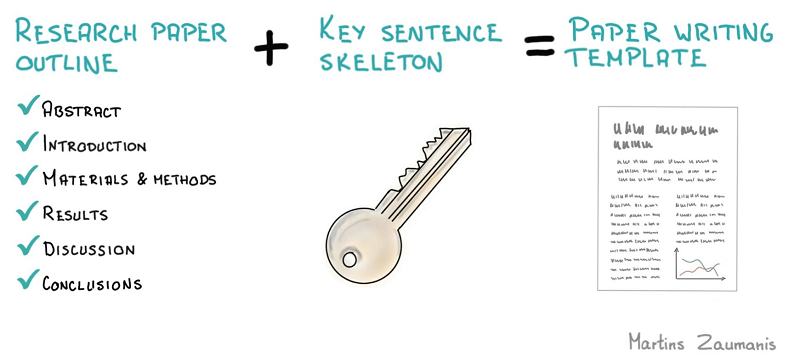
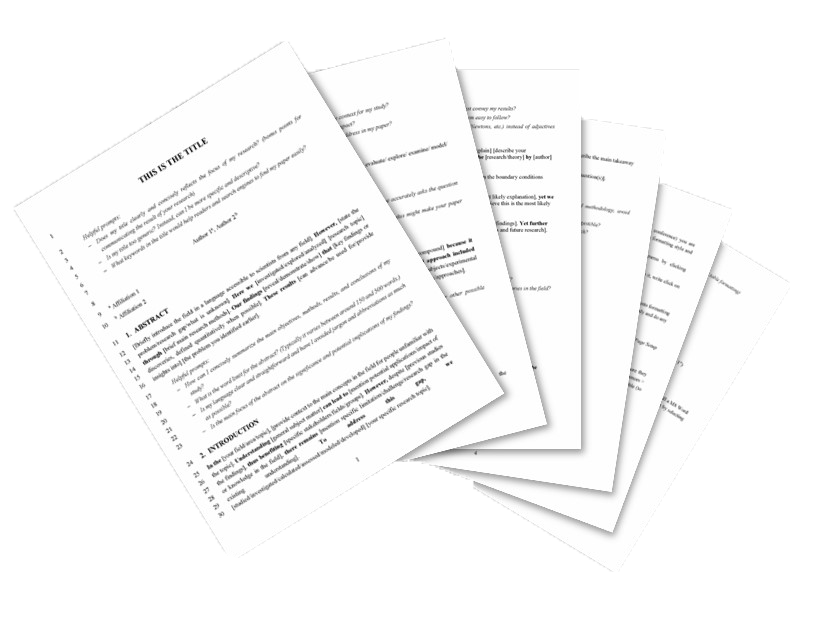

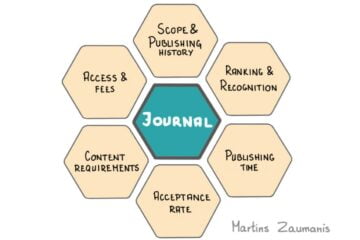

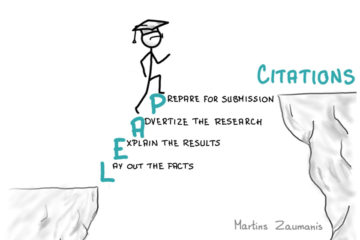


2 comments